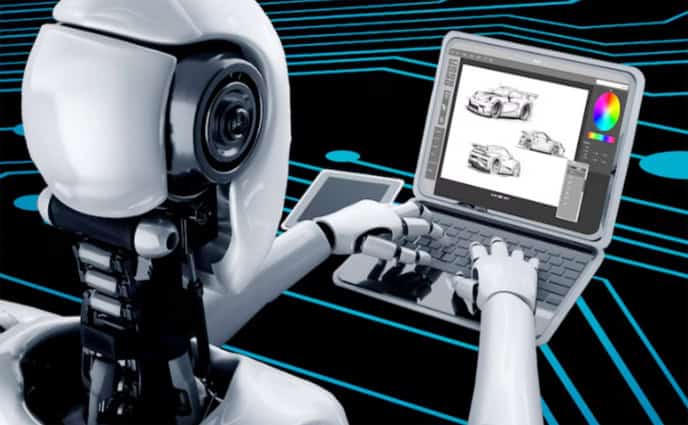
Effects of Artificial Intelligence on CAD design and drafting across the globe have transformed varied industries in recent years. One advantageous area is CAD design and drafting services. To an extent, AI enhances the efficacy, precision, and capability of computer-aided design (CAD) software in all phases of product design, architecture, and manufacturing design. In their desire to find new and productive means to optimize their processes and increase the quality of their output, organizations are increasingly adopting AI-driven technologies into their design and drafting workflows. This blog will explain how AI changes CAD design and drafting services, particularly architecture, manufacturing, and product design.
The Role of AI in CAD Design and Drafting Services
CAD design and drafting services have always been joint manual processes in which professionals take exact dimensions, build 3D models, and develop and improve feedback-based designs. However, CAD software has improved these processes over the last few decades. Applying AI is now taking the process and improving it even more by automating and optimizing many associated tasks. AI-enabled CAD Design and Drafting services will lead to more informed designs, faster design iterations, and much greater accuracy.
Artificial Intelligence in CAD is expanding quickly and has enabled all kinds of improvements to the way designers and engineers work on their projects. AI has improved the modeling process by early error detection, optimizing designs, and even creating new designs based on the information provided by the user.
In the past, CAD systems could only automate less complex tasks, such as creating shapes or placing objects within a grid. With AI systems, CAD can detect the designer’s intention, suggest ways to improve on that intention, and even deal with more complex design aspects. In some situations, AI even looks back on previous designs and makes suggestions for improvement based on historical data, improving the design process by making it informed and efficient.
How AI is Shaping CAD Design Transformation
Artificial intelligence for CAD drafting services is more than just a fashionable term. It is a revolution. Much of the transformation. CAD designers are experiencing this because of advances in AI algorithms and machine learning. AI can take large amounts of data and help CAD systems identify patterns and optimize designs in ways you never thought possible. Designers no longer rely on trial and error with AI-based systems. Instead, they get intelligent suggestions and automated solutions.
A significant advantage of using artificial intelligence in CAD design and drafting services is that it aims at an experienced designer’s eye at reducing human error. AI can identify gaps or inconsistencies within designs that a designer may miss. With the inclusion of machine learning models, CAD systems can identify both mistakes and suggest some design changes to address those errors. Implementing AI reduces time and cost expenditures in commonly occurring revisions.
In addition, AI-driven CAD systems can adjust and progress over time, learning from user input and enhancing the design proposals it provides. Intelligent systems that facilitate design improve the process speed and efficiency and inform users how the design might be improved over time.
The Future of CAD with AI-Driven Generative Design
One of the most significant advancements of AI generative design is its ability to produce new design solutions with characteristics specified by known constraints and objectives. AI generative design uses a machine learning process to run through and analyze multiple design iterations and variables to find the most effective and efficient design solutions.
This methodology allows designers to seek new opportunities beyond the constraints of traditional design practices. In CAD design and drafting, generative design algorithms can create optimized geometries, more efficient structures, and unique design solutions based on established performance objectives and predetermined constraints associated with materials and manufacturing.
AI has the potential to help designers create more resource-efficient designs and better overall value to consumers. AI for CAD drafting can minimize material selection while keeping construction integrity and performance standards in check. Traditional design methods cannot provide this level of optimization.
AI in Architecture Design to Enhance Creativity & Precision
AI-powered tools can simulate site interactions and offer informative energy usage, lighting, and air movement analyses. This means an intelligent CAD tool can improve both creative and technical design.
Also, architects utilizing AI will create increasingly accurate and precise integration of Building Information Modeling (BIM) software. That is, AI can assist architects in producing BIM models that ultimately capture the entire lifecycle of a building. That is
the development process as a whole, from the initial concept to construction. This will allow everyone involved to understand the design process better, keeping key decision-makers abreast of everything during the iterative process. Thereby it limits mistakes that might otherwise occur and prove costly.
AI for Product Design to Revolutionize the Design Process
AI assistive technology for product design is a fast-growing area in CAD design and drafting services. Designers can now access AI tools that support them in designing new products faster and more efficiently. AI systems can also analyze user feedback, market trends, and/or product performance data to suggest enhancements, recommend features, and predict the success of newly designed products.
AI enables product designers to run simulations that assess how a product will function in the real world. This decreases the requirement for physical prototypes and saves time and materials. AI can also assist product designers with design optimization for manufacturability to create a functional and economically viable product for production.
One instance of AI used in product design is in consumer electronics. In this domain, AI predicts user interactions with system devices, improving designers’ capabilities for creating intuitive interfaces and positively influencing users’ experience while using the devices. AI can also aggregate large amounts of consumer data, promoting more effective changes in device usage and suggesting features that the user would most desire. This competitive edge helps users get the optimal device experience during the device’s life cycle.
The Future of CAD Design
Future CAD design and drafting services will be connected to AI. AI will become an even more significant component of the design process as AI technology progresses. With technological improvements in machine learning and deep learning algorithms, the expectation is that AI advanced tools will represent even greater intelligence while taking on progressively complex tasks. Future CAD design and drafting services will likely be completely automated, allowing designers to move to more creative and higher-level decision-making. At the same time, the repetitive and mundane work is completed using AI.
A major aspect of AI in architecture design is its ability to help with design optimization as design occurs. Using advanced AI algorithms, CAD systems can suggest edits during the process, allowing designers (and engineers) to refine and optimize designs before they are manufactured or built.
Conclusion
Artificial intelligence is markedly changing CAD design and drafting services. The power of AI is changing the general landscape of design by improving design process workflows, creating greater accuracy, generative design, and increased productivity in AI architecture design and AI in manufacturing design is also booming.
Industries will benefit from speedier, more effective, and ultimately more innovative design solutions by leveraging artificial intelligence (AI) to remove human error, save costs, and find new opportunities in design. In the future, we want to see AI develop further into technology that will change how CAD design works, creating new opportunities for improving groundbreaking CAD solutions that push the limits of CAD design, drafting, and fabrication capabilities.




